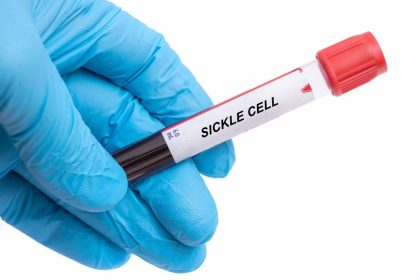You probably know that anemia makes you feel tired and weak, but what you might not realize is that your iron-deficient blood is forcing your heart to work overtime in ways that could permanently damage your cardiovascular system. While you’re dismissing fatigue as just part of being busy, your heart is struggling to pump oxygen-poor blood through your body, creating strain that accumulates over months and years.
The connection between anemia and heart disease in women is one of the most underdiagnosed and undertreated health relationships in modern medicine. Doctors often treat these as separate conditions, missing the crucial link that could prevent serious cardiovascular complications down the road.
Women are disproportionately affected by both anemia and heart disease, yet the medical system has been slow to recognize how these conditions feed into each other, creating a dangerous cycle that puts female hearts at risk in ways that most women never see coming.
Your heart compensates for thin blood by working harder
When you’re anemic, your blood carries less oxygen than your body needs, so your heart responds by pumping faster and harder to try to deliver adequate oxygen to your tissues. This compensation mechanism might seem helpful, but it creates chronic cardiovascular stress that wears down your heart muscle over time.
Think of your heart like a worker who’s been asked to do twice as much work with half the resources. Initially, it rises to the challenge, but the constant extra effort eventually leads to exhaustion and damage. Your heart rate increases, your blood pressure may rise, and your cardiac output has to work at maximum capacity just to maintain normal function.
This chronic overwork causes your heart muscle to enlarge and thicken, a condition called left ventricular hypertrophy. While your heart is trying to become stronger to handle the extra workload, this thickening actually makes it less efficient and more prone to rhythm problems and eventual failure.
The scary part is that this cardiac remodeling happens gradually and silently. You might notice being short of breath or having a faster heart rate, but you probably attribute these symptoms to your anemia rather than recognizing them as signs of developing heart problems.
Iron deficiency creates a perfect storm for cardiac complications
Iron isn’t just important for making red blood cells, it’s also crucial for proper heart muscle function. Iron deficiency affects the heart directly by impairing the function of iron-containing enzymes that are essential for cardiac energy production and contraction.
Your heart muscle requires enormous amounts of energy to contract effectively, and iron is a key component of the cellular machinery that produces this energy. When iron levels are low, your heart cells can’t generate energy efficiently, leading to weakened contractions and poor cardiac performance.
Iron deficiency also affects your heart’s electrical system, potentially leading to arrhythmias or irregular heartbeats. The minerals and electrolytes that control your heart rhythm depend on proper iron status to function correctly.
This creates a vicious cycle where iron deficiency makes your heart work harder while simultaneously making it less capable of handling that increased workload. Your heart is being asked to run a marathon while being deprived of the fuel it needs to perform.
Women face unique cardiac risks from chronic anemia
Women are significantly more likely to develop iron deficiency anemia due to menstrual blood loss, pregnancy demands, and dietary patterns that often don’t include enough iron-rich foods. This gender disparity in anemia rates directly translates to increased cardiovascular risk that most women don’t recognize.
The hormonal changes that occur during menopause can compound this problem by affecting how the body processes and stores iron while simultaneously increasing cardiovascular risk factors. Women who enter menopause with existing iron deficiency face a double hit to their cardiac health.
Pregnancy creates particularly high cardiovascular demands while often depleting iron stores, setting up a scenario where young women can develop heart problems that don’t become apparent until later in life. The cardiac adaptations that occur during pregnancy with concurrent anemia can have lasting effects on heart health.
Women also tend to have smaller body sizes and blood volumes than men, which means that the same degree of iron deficiency creates proportionally greater cardiovascular stress. A level of anemia that might be manageable for a larger person can create significant cardiac strain in smaller women.
Silent symptoms mask serious cardiovascular damage
The overlap between anemia symptoms and early heart disease symptoms means that serious cardiovascular problems often go unrecognized until they’ve progressed significantly. Fatigue, shortness of breath, and exercise intolerance are dismissed as normal parts of anemia when they might actually indicate developing heart failure.
Many women learn to live with chronic fatigue and reduced exercise capacity, not realizing that these symptoms could signal that their heart is struggling to compensate for their anemia. By the time more obvious cardiac symptoms appear, significant heart damage may have already occurred.
The gradual nature of both anemia development and cardiac damage makes it particularly difficult to recognize the connection. Unlike a heart attack, which has dramatic symptoms, the cardiac effects of chronic anemia develop slowly enough that women adapt to their reduced capacity without realizing something serious is happening.
Healthcare providers often focus on treating the anemia without assessing the cardiovascular impact, missing opportunities to prevent or address heart damage before it becomes irreversible.
The inflammation connection amplifies cardiac risk
Chronic anemia often involves underlying inflammation that independently increases cardiovascular risk. The inflammatory processes that can cause or contribute to iron deficiency also promote the development of atherosclerosis and other forms of heart disease.
Iron deficiency itself can trigger inflammatory responses as your body struggles to maintain normal function with inadequate resources. This inflammation affects blood vessels, making them more prone to damage and plaque formation that leads to heart disease.
The chronic stress response that occurs when your body is constantly struggling with inadequate oxygen delivery also promotes inflammation and hormonal changes that negatively affect cardiovascular health over time.
This inflammatory component means that treating anemia involves more than just iron replacement. The underlying inflammatory processes need to be addressed to fully protect cardiovascular health and prevent the cycle of anemia and heart disease from continuing.
Blood pressure changes create additional cardiac stress
Anemia can cause complex changes in blood pressure that add another layer of cardiovascular risk. Some women develop high blood pressure as their heart works harder to pump oxygen-poor blood, while others experience low blood pressure due to reduced blood volume.
Both high and low blood pressure scenarios create problems for heart health. High blood pressure adds to the workload on an already stressed heart, while low blood pressure can reduce the perfusion pressure needed to adequately supply the heart muscle itself with oxygen and nutrients.
The blood pressure changes associated with anemia can also mask or complicate the diagnosis of other cardiovascular conditions. Women might be treated for hypertension without addressing the underlying anemia that’s contributing to their elevated blood pressure.
These pressure changes can also affect kidney function, creating additional complications that further impact both anemia management and cardiovascular health in a complex web of interconnected problems.
Early intervention can prevent irreversible heart damage
The good news is that addressing anemia early and appropriately can prevent most of the cardiovascular complications associated with iron deficiency. When anemia is corrected before significant cardiac remodeling occurs, the heart can often return to normal function.
However, the key is comprehensive treatment that addresses both the anemia and its cardiovascular effects. This might involve not just iron supplementation, but also cardiac monitoring, blood pressure management, and addressing any underlying inflammatory conditions.
Women with anemia should have regular cardiovascular assessments, including blood pressure monitoring, electrocardiograms, and potentially echocardiograms to evaluate heart function. Early detection of cardiac changes allows for interventions that can prevent progression to more serious heart disease.
The treatment approach needs to be individualized based on the severity of anemia, the presence of cardiovascular symptoms, and individual risk factors. Some women may need aggressive iron replacement therapy, while others might benefit from slower, gentler approaches that don’t stress an already compromised cardiovascular system.
Understanding the connection between anemia and heart disease empowers women to take their iron deficiency seriously and seek comprehensive care that protects both their blood health and their cardiovascular future.














